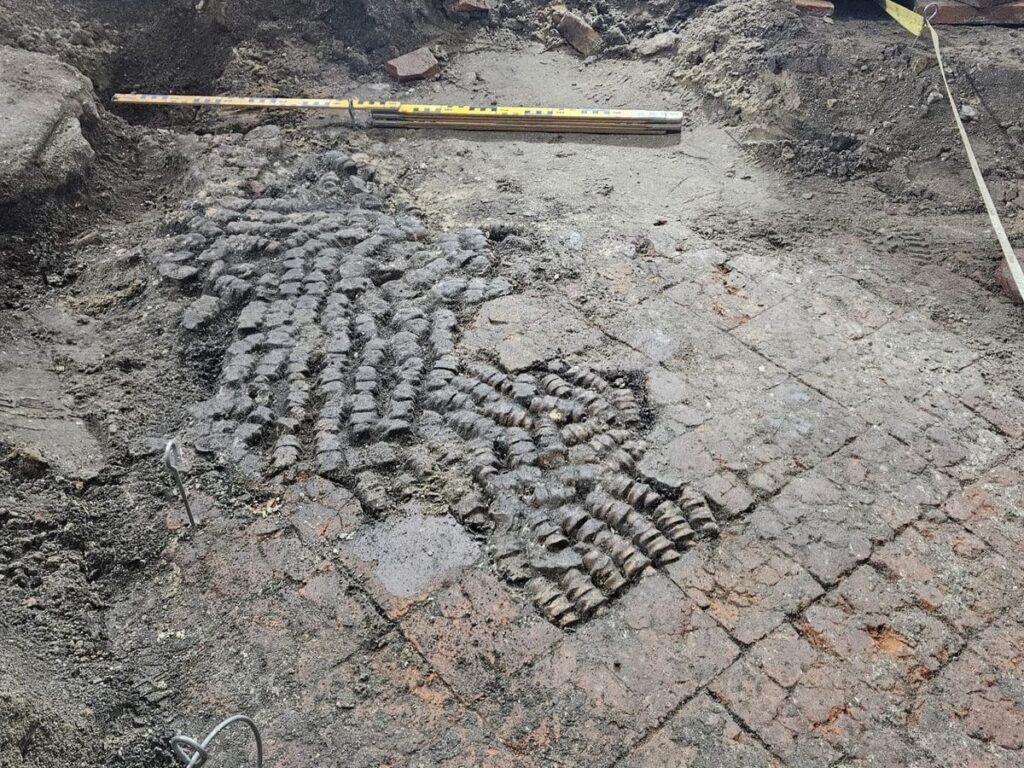The bone and tile floor was found in a building in Alkmaar’s historic center.
Municipality of Alkmaar
Archaeologists have made a startling discovery in Alkmaar, a Dutch town famous for its cheese market. In a building under construction, they found a mosaiced floor made of tiles and sawed-up cow bones.
According to a statement from the municipality of Alkmaar, it appears the floor was originally made completely of tile. When the tile degraded, the gaps were filled in with livestock bones. All of the bones are either metacarpals or metatarsals, which are part of cows’ lower legs. Researchers think the floor could date to the 15th century.
“We were very happy to have the opportunity to see this bone floor with our own eyes,” says Nancy de Jong, an archaeologist working at the site, in the statement, per a translation from the NL Times. “It is always a privilege to uncover something from the distant past and contribute new information to the history of Alkmaar.”
Archaeologists were invited to examine the floor during the building’s renovation.
Heritage Alkmaar
Alkmaar, located about 25 miles north of Amsterdam, is known for its traditional Dutch cheese market, which is the country’s oldest. The town had a communal cheese scale as far back as 1365, and the earliest known record of its cheese market dates to 1408, per Live Science’s Kristina Killgrove. In the 1600s, the Alkmaar market traded millions of pounds of cheese, exporting it throughout Europe and European colonies. Alkmaar became home to the Dutch Cheese Museum in 1983.
Researchers saw the cow bone floor when they were invited to examine a house under renovation in Achterdam, Alkmaar’s red-light district. As archaeologists say in a Facebook post, the house was built around 1609, but the tile and bone floor may be older: The standing house might have been built atop an older foundation. As de Jong says in the statement, the floor was significantly worn down from extensive use.
Other cow bone floors have been found in Holland. In fact, a strikingly similar example was unearthed in the nearby city of Hoorn, and others were discovered in Enkhuizen and Edam. All three likely date to the 15th century.
The researchers say that tiles were a common and inexpensive material in 15th-century Holland, so they don’t know why the floor’s builders used cow bones. The bovine material may have simply been a quicker, slightly cheaper fix for a crumbling tile floor, according to the statement. Alternatively, the bones could have been included because they were connected to the activities that occurred inside the building. The researchers will continue studying the site to learn more about its origins.
“The discovery of this floor is incredibly interesting,” says Anjo van de Ven, an Alkmaar heritage councilor, in the statement, per the NL Times. “In the historical city center of Alkmaar, it is crucial to treat the soil carefully. There are still many hidden stories waiting to be uncovered.”


